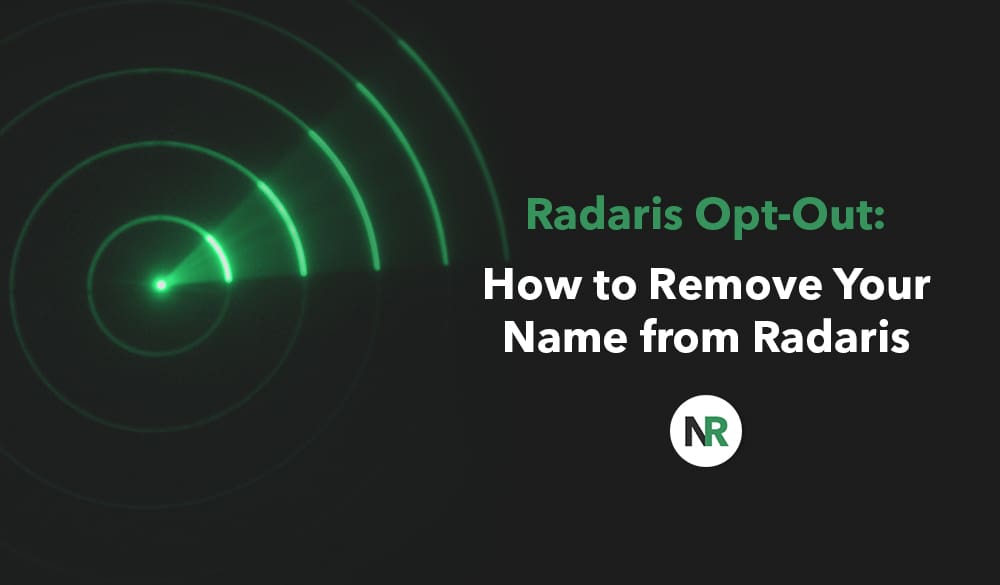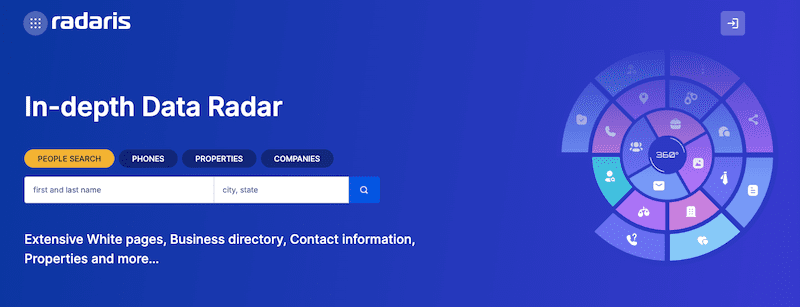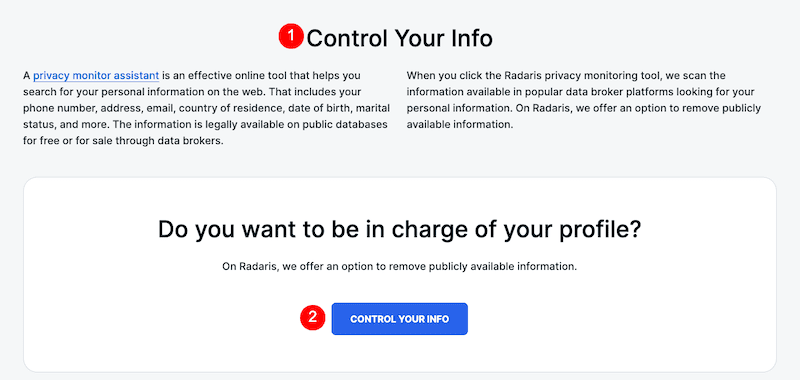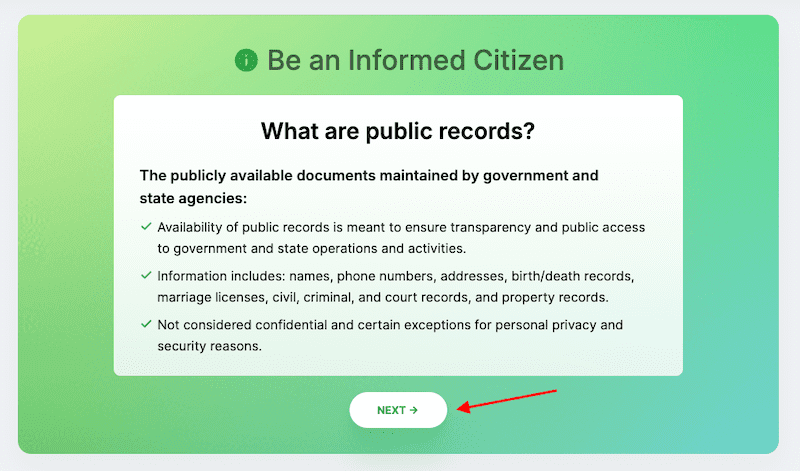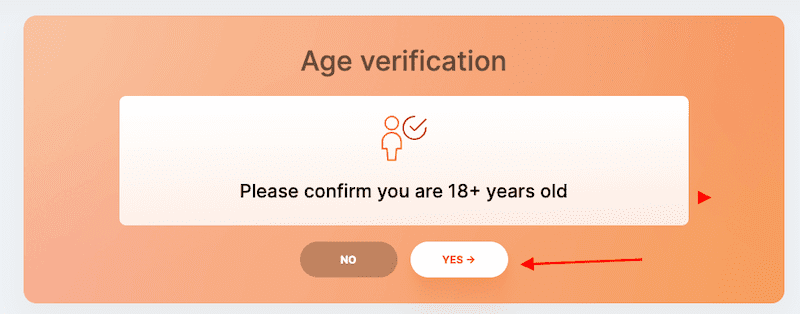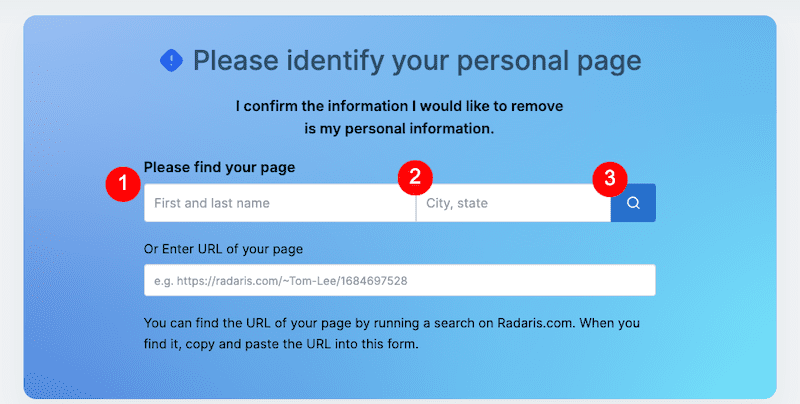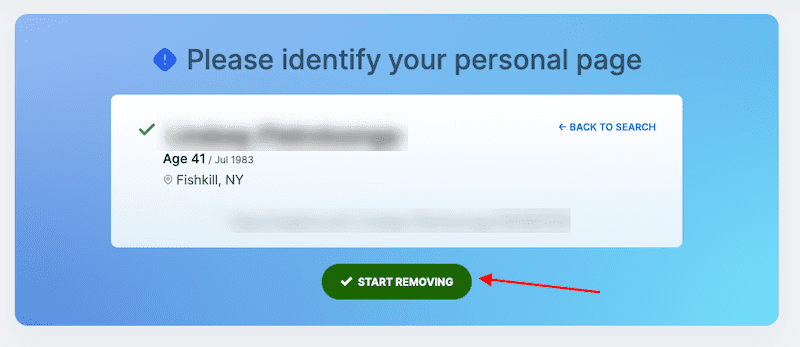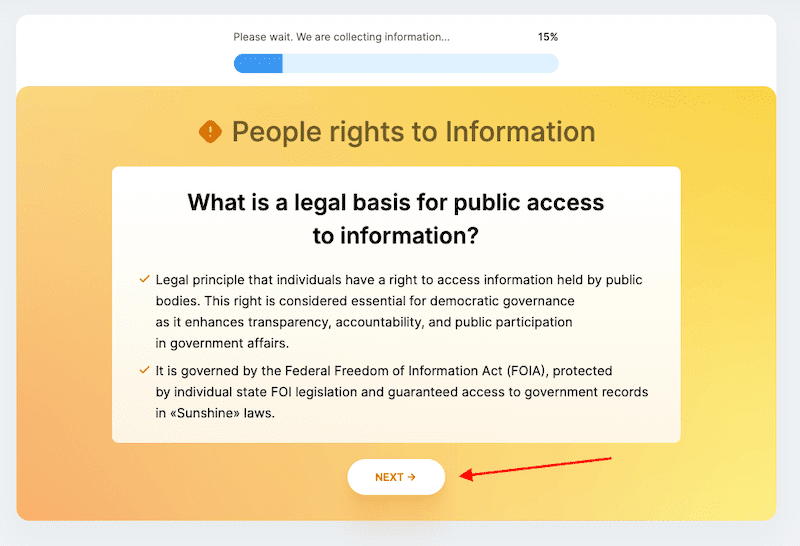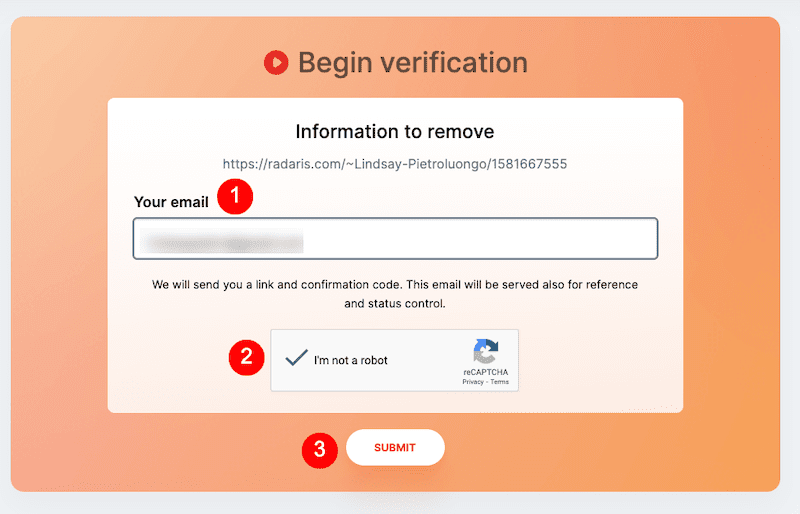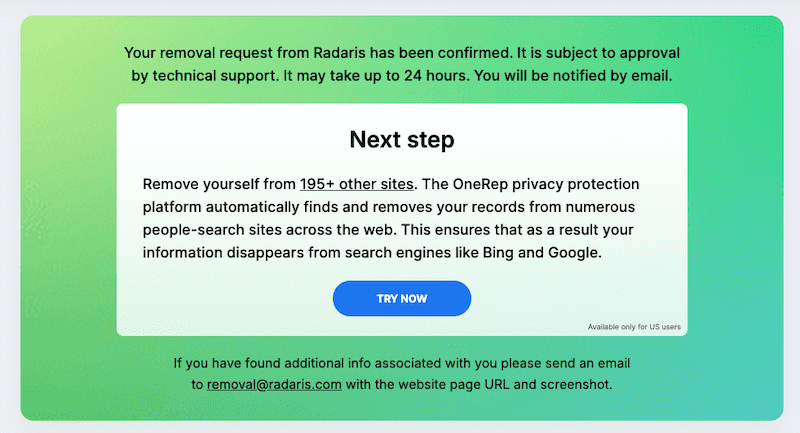Your goal: Remove name from Radaris. Our goal: Walk you through the Radaris opt out process to protect your online privacy. Learn how we can help remove your info and protect your online reputation today.
With the world becoming increasingly digital, online reputation management is more important than ever.
It’s now a common practice to perform a Google search about people we interact with. That’s likely why “remove name from Radaris” and other similar searches are increasingly popular.
Whether we’re screening job candidates or researching dates for Friday night, a person’s online reputation is what shapes — or breaks — their success.
While having so much information online thanks to people search sites can be a force for good in many ways, it can also be a terrible burden. One bad review, status update or confusing information on a data broker site can tank your chances of achieving your personal goals.
But where does that information come from? And how can we help you take control of your digital privacy?
This Radaris opt out guide will help you remove your information from the private data broker so you can take back control of your online reputation.
What Is Radaris?
Radaris is an information broker, similar to many other people search sites and data brokers on the internet. Information brokers deal in the exchange of personal information about individuals. This sometimes includes public records or other types of private information.
While there are many data broker sites that gather information for background checks, Radaris is a cut above the rest. Though it’s a search engine like Google or Bing, Radaris specializes in gathering and selling personal information about individuals.
Radaris pulls public records from various sources on the web and compiles that information into a thorough report for users.
What Private Data Can People Find On Radaris?
Radaris sets itself apart by going further than the average background check on other data broker sites. The company offers a wide range of services that focus on bringing the largest number of public records possible into their system.
Once they have that information, they place it into files and connect pieces of information to paint a better picture of the subject. The more information they have, the clearer the picture becomes.
These are just the basics of what Radaris is able to gather on you:
- Your current and former address
- Extensive address history
- Current and previous phone numbers
- Deeds, titles, and other records of property ownership
- Social media profiles
- Work history
- Patent filings
- Profile pictures
Radaris gets this information from public records gathered from various places, including:
- Local government
- County registries
- Police reports
- Criminal records
- License registries
- Deed registration
- Phone directories
- USPTO
- WhitePages
- Other public directories
There are tons of data brokers and people search sites online. They all use information from each other and other sources to compile background information about you. This can be overwhelming if there’s negative content about you online and you don’t know how to control it.
For help contacting and removing your information from data brokers, call us today at 844-461-3632.
Why Do People Use Radaris?
The biggest perk to using data brokers for people searches and background checks is that, because it’s online, it’s a must faster process than it was in the past.
Reports created by Radaris may be used to confirm information or perform background checks. Businesses often use these reports to confirm that job seekers don’t have criminal records or drug offenses.
Radaris may also help employers confirm candidates attended the schools on their resumes. Or, they can help verify where an applicant lives.
These reports can also be ordered by individuals for private use. Sometimes this is harmless.
For instance, if someone is hiring a nanny to watch their children, they may want to confirm there are no allegations of neglect or misconduct against the potential employee.
Or if they are hiring a contractor to work on their home, they may want to check how long that person has owned his business and whether there are any lawsuits against him.
However, Radaris can also be used by people with bad motives. If you are listed by Radaris and other data brokers, people can find everything about you, from past addresses to telephone numbers.
This could be used to stalk someone, steal their identity, or gain access to their online accounts because safety questions often ask where you were born or grew up.
How Does Radaris Work?
Radaris is one of many free people search sites that lets you look up personal information using a first and last name, along with a city and state, or by entering an individual’s phone number.
Radaris operates on what’s known as “high-volume semantic analyses.” This is a fancy way of saying that Radaris has so much information on so many people that it’s able to make very accurate assumptions about an individual based on that info.
For instance, if you know that someone has had two jobs a year for 10 years, has moved six times, and is frequently denied credit increases, you can reasonably assume they may be a credit risk.
While this is sound logic based on thousands of similar patterns, it fails to consider the context. Maybe this person works in an unstable industry, has a sick child, or has a spouse in the military. These negative conclusions are just one example of why you may want to fill out an opt out form and protect your online reputation.
Note that while there isn’t a charge for creating a Radaris account, there is a fee for accessing a premium report or signing up for a membership.
How To Opt Out of Radaris
While Radaris is one of the more popular data brokers, it simply retrieves public records and creates personal listings. Removing your information from Radaris will not erase your public records, and the information in them may still appear on other data brokers’ sites.
Here’s how to submit a removal request to Radaris and opt out of its search results.
1. Navigate to the opt out form.
You’ll access the content removal link from the Radaris home page. Start by going to Radaris.com.
Scroll down to the section that says Control Your Info, which is toward the bottom. Click the blue Control Your Info button.
You’ll see a box that explains that Radaris doesn’t have to delete public information. Click the Next link.
The next window will say Be an Informed Citizen at the top, and you’ll need to wait for about a minute to proceed. When it’s ready, click the Next link on the bottom of the window.
2. Confirm your age.
You’ll be asked to confirm that you’re 18 years or older. Click the Yes button to proceed.
3. Find your information on Radaris.
Enter your first name, last name, city, and state, then click the Search Icon.
Select the matching search result by clicking the Select button to the right of it.
4. Confirm your selection.
Next, you’ll see a page with the search result you selected. Click the Start Removing button.
5. Click through the next windows.
As Radaris processes your opt out form, you’ll click through windows that look similar to the one below. Continue clicking Next or View More as the options appear.
6. Begin the verification process.
Eventually, you’ll reach a window that says Begin Verification. Enter your email address and click the captcha box. The Submit button will appear as you start filling out the email field. Click it when you’re done.
7. Check your email.
You’ll receive an email from Radaris with a confirmation link and verification code. Click the link.
8. Complete your opt out form and removal request.
The verification link will redirect you to a Radaris webpage with another box that you’ll need to click Next on. Then, you’ll see a feedback page. Leave your rating, click the captcha box, and hit Submit.
While this seems like a step you can skip, this is what will take you to the final confirmation page that says your request to opt out of Radaris is confirmed.
Radaris Competitors That Record Personal Information
Once you opt out of Radaris, there is a long, long list of other sites that gather, list, and sell information garnered from your public records. You’ll want to request removal or submit an opt out form for each of these sites as well.
To protect your reputation and your privacy, see if your personal data is present on the following sites:
- Intelius.com
- Acxiom.com
- MyLife.com
- Zabasearch.com
- Spokeo.com
- Peekyou.com
- USSearch.com
- PeopleFinders.com
- PeopleLookup.com
- PeopleSmart.com
- PrivateEye.com
- Whitepages.com
- USA-People-Search.com
- Spoke.com
- DOBSearch.com
Each site has its own process for removing your information. Some will be easier than the Radaris process, while others will be more difficult. There’s no guarantee that a site will remove your information or that your data won’t appear back on the site even after it’s been taken down. That’s why an ORM company with data removal experts can help.
Contact Us Today
Want to remove your name from Radaris and more than 50 online data collectors fast? Call NetReputation at 844-461-3632 or fill out the contact form below for a free consultation.
